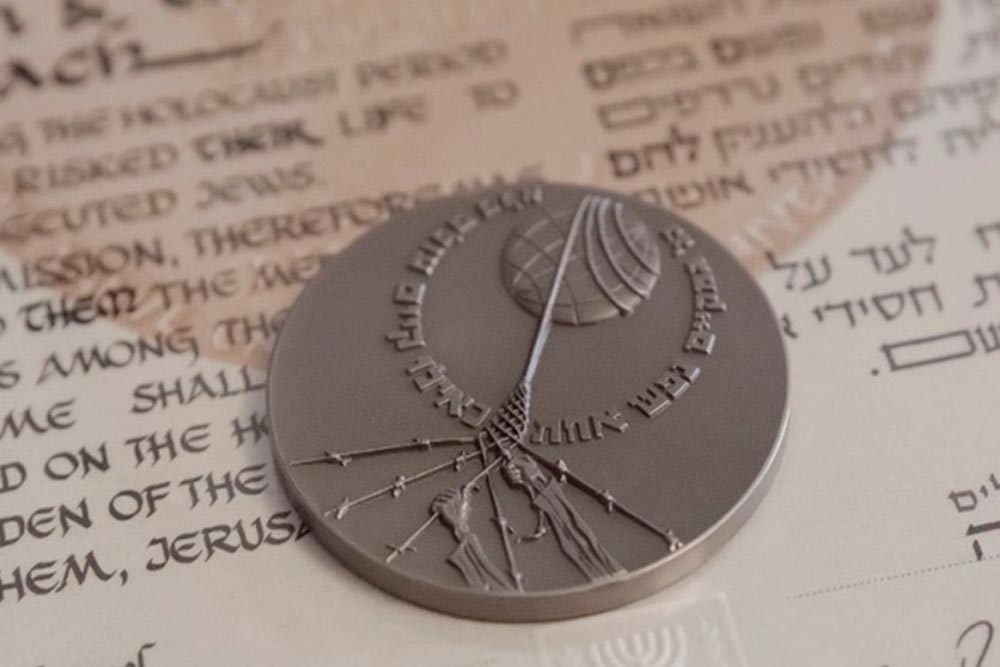Bank of Portraits / Hnevush Vasyl and Mariia, Radetska Yaryna

Hnevush Vasyl and Mariia, Radetska Yaryna
Yaryna Radetska lived in the village of Stavnytsia in Khmelnytskyi region. She worked in the nearby urban-type settlement of Medzhybizh (current – the settlement of Medzhybizh, Khmelnytskyi district). There she met the Jewish family of Zatsiv. The woman was very fond of their daughter Bronia, who resembled her late daughter.
In early July, the region was occupied by German troops, and soon the local Jews were relocated to a ghetto created near Banna Street and surrounded by a high fence with barbed wire. 15-20 people were accommodated in rooms in the houses, and they were also forbidden to go outside the designated area. Yaryna often visited her friends, brought food, and provided moral support. The conditions in the ghetto and the treatment of the Jews were terrible. Men were sent to earthworks, forced to dig ditches with their hands under the blows of sticks. On September 22, 1942, the occupiers surrounded the ghetto and gathered the Jews in the market square. Young people were separated; some were then transferred to a camp in Letychiv village (current – rural settlement Letychiv, Khmelnytskyi district). The rest were told to gather things to send to the rear for work. Some people hoped that they would be sent to the construction of some facility or, in the worst case, to a concentration camp. But they were taken outside the rural settlement of Medzhybizh and shot near the village of Rusanivka. More than 7 thousand people were killed in the rural settlement of Letychiv, and around 3 thousand elderly people, women and children near the rural settlement of Medzhybizh.
14-year-old Bronia Zats was lucky to avoid being shot, to run away and get to Yaryna Radetska's house. The woman was incredibly happy that Bronia was alive, and hid her in her village hut for two months. But someone reported, and they came to her with a search. Bronia managed to escape, and Yaryna was severely beaten. Having recovered, after a few days she went to the forest in search of the girl. Ignoring the threat of reprisals, she was transferred to her again at night. She hid more carefully, taught Christian customs, because she understood: in order to survive, she would have to look for a more reliable shelter.
Disbelieving and begging, Bronia reached the village of Stara Syniava (current – rural settlement of Stara Syniava of Khmelnytskyi district) and under an assumed name applied for a job at a collective farm. She spent the night in a shack with other villagers and once in a dream spoke Yiddish. Rumors about Broni's Jewish origin reached the management. She was taken for questioning, beaten and thrown into a pit with shot Jews. Barely alive, she no longer had the strength to get out, so she just cried quietly. Local resident Mariia Hnevush, who was passing nearby, heard the moaning and approached. What she saw scared the woman very much, and she started to run away. However, after regaining control, she realized that there was a living person there. So Mariia returned and helped Bronia out of the hole, and then told her to sit quietly in the bushes until dark. At home, she told her husband Vasyl about her adventure and offered to take the girl to her. At first he got angry and refused his wife, but then he took pity on the Jewish girl and brought her home at night. The Hnevush couple took care of Bronia until the end of the occupation. After the war, the Jewish girl lived in a Ukrainian family until her marriage. In the 1990s, together with her husband Bronislav Halfina (Zats), she emigrated to Israel.
In 1996, Yaryna Radetska and Vasyl and Mariia Hnevush were recognized by Yad Vashem as Righteous Among the Nations.
Svitlana Demchenko
Kyiv
National museum of the History of Ukraine in the Second World War
-
fingerprintArtefacts
-
theatersVideo
-
subjectLibrary



